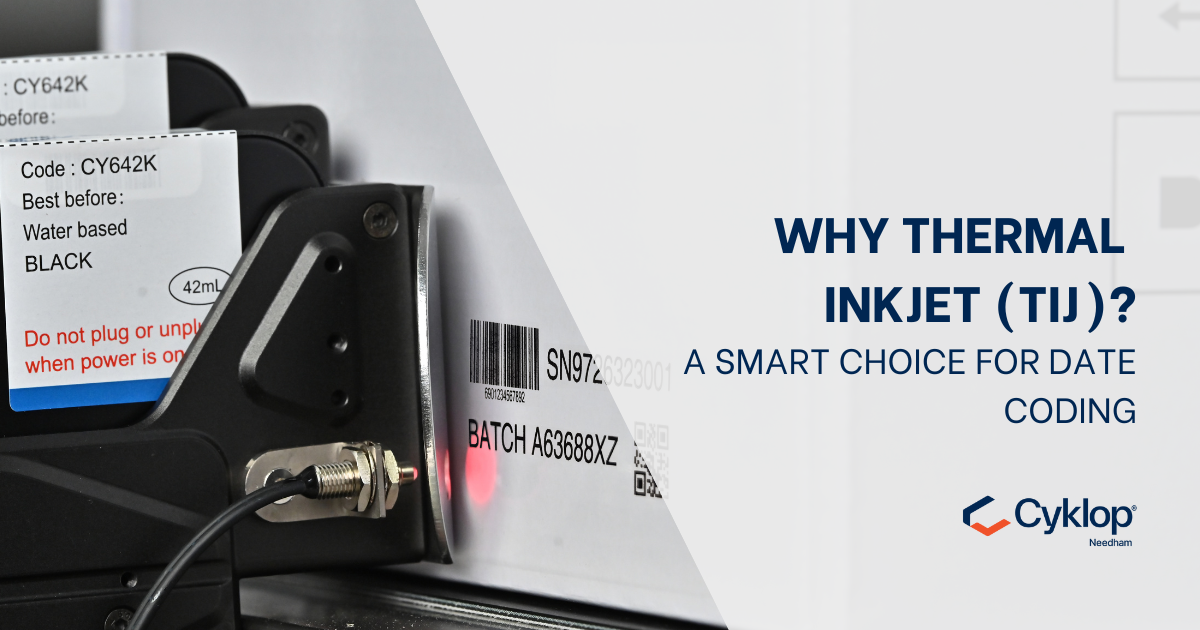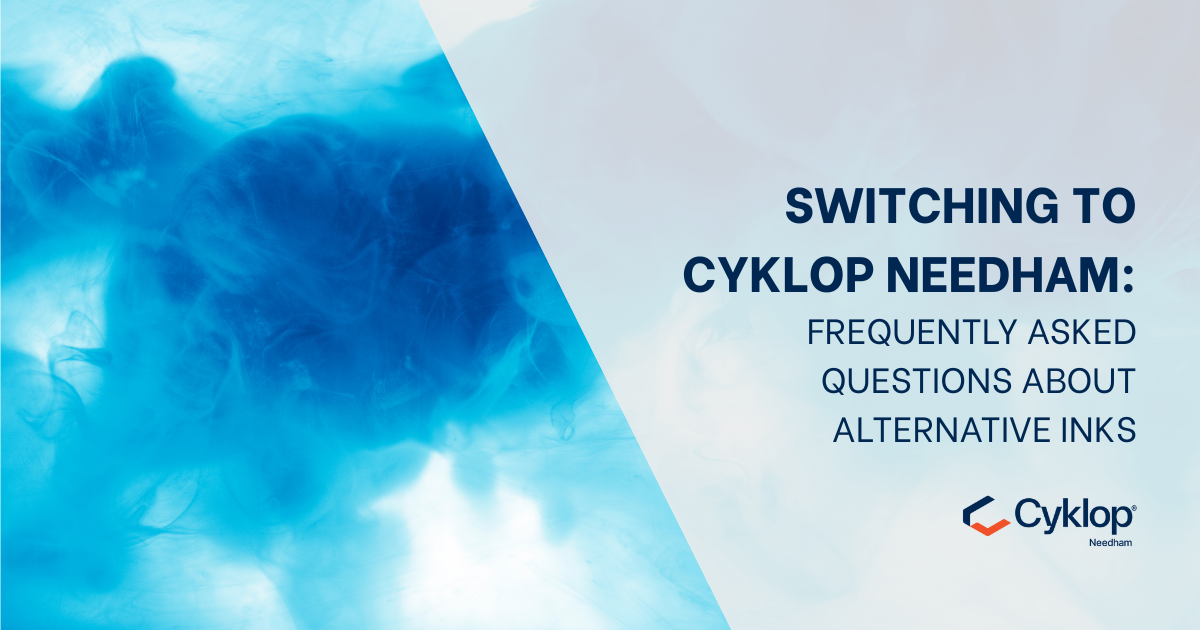Why Thermal Inkjet (TIJ) Printers Are a Smart Choice for Date Coding
What Is a Thermal Inkjet (TIJ) Printer? Thermal Inkjet (TIJ) printing is a non-contact coding method ideal for marking variable data such as expiry...
2 min read
Samuel Mcgarrigle
Mar 18, 2022 3:14:29 PM

There are several key factors driving manufacturers to invest in coding and marking technology—from regulatory compliance and product traceability to ensuring clear and accurate product information.
While there are many coding options on the market, here at Cyklop Needham, Continuous Inkjet (CIJ) printers are our speciality—and our CM700 range is designed to deliver exceptional performance across a wide variety of industries and applications.
Let’s explore five major industries that benefit from CIJ technology, and why the CM700 range is a go-to solution for manufacturers around the world.
1. Food & Beverage Packaging
Ensuring product traceability, authenticity, and safety is non-negotiable in the food and beverage industry. Batch numbers, barcodes, expiry dates, and production codes are critical in the event of recalls and for overall supply chain transparency.
CIJ printers like the CM700 can print directly onto:
Bottles and cans
Dairy cartons
Retail Ready Packaging (RRP)
Meat and poultry packaging
Ready meal trays
Whether you're a global brand or an SME, CIJ technology helps ensure compliance and consumer confidence.
2. Cable & Wiring Production
In the wire and cable industry, speed and accuracy are everything. Extrusions often require sequential numbering, meter marking, and durable product IDs—sometimes printed in high-resolution onto non-porous or irregular surfaces.
CIJ coding systems provide:
High-speed performance
Permanent or semi-permanent ink options
Large print height capability
Consistent results on curved and flexible materials
The CM700 range delivers reliable output even in high-speed, high-throughput extrusion environments.
3. Animal Feed Packaging
Just like in human food production, traceability and clarity are critical for pet food and animal feed. Manufacturers need to print batch numbers, product information, and packaging indicators clearly and reliably.
CIJ printers like the CM700 can print onto:
Film packaging
Cups and trays
Paper sacks
Cardboard cartons
Bulk packaging
Specialty inks such as thermochromic ink also allow "ready-to-serve" indicators for pet foods—an added layer of functionality that CIJ makes simple.
4. Pharmaceuticals
The pharmaceutical industry requires high-precision, compliant coding on both primary and secondary packaging—blister packs, cartons, bottles, and more.
CIJ printers offer:
High-speed printing of batch codes and expiry dates
2D barcodes and alphanumeric IDs
Non-contact printing on various substrates
Compliance with global regulations for drug traceability
CM700 CIJ printers are ideal for producing sharp, readable codes at scale without interrupting production flow.
5. Construction and Building Materials
Construction sites are harsh environments—but coding still needs to be durable, legible, and consistent. Materials like metal, timber, and plastic all require product marking that can withstand tough conditions.
Why CIJ beats TIJ for construction settings:
Greater throw distance (can print from further away)
More robust and heavy-duty build
Lower cost of consumables over time
Can handle large-scale workflows efficiently
The CM700 CIJ range is built for rugged performance, ensuring your codes last as long as the materials themselves.
Conclusion
From traceability in food packaging to meter marking in cable manufacturing, the CM700 CIJ range from Cyklop Needham is trusted across industries for delivering reliable, high-speed, and cost-effective coding solutions.
Want to learn more about the CM700 range?
📞 Call: +44 (0)1948 662629
📧 Email: enquiries@needham-ink.com
🌐 Visit: www.needham-ink.com


What Is a Thermal Inkjet (TIJ) Printer? Thermal Inkjet (TIJ) printing is a non-contact coding method ideal for marking variable data such as expiry...

As independent UK manufacturers of a wide range of compatible industrial inks, including CIJ, TIJ, and wide-format inkjet, we understand the...

Choosing Needham Ink Technologies for your OEM-compatible CIJ ink isn’t just about cost savings. It’s about gaining control, consistency, and...